Galahad and the Holy Grail is an action-adventure game for Atari 8-bit computers. It was designed and programmed by Douglas Crockford and published by the Atari Program Exchange in 1982. Influenced by Adventure for the Atari VCS and Arthurian legend, it contains almost 100 rooms–according to the manual–which are switched between with a flip screen technique. The game resulted in Crockford being hired at Atari Research. Following the closure of the Atari Program Exchange, a lightly updated version of Galahad and the Holy Grail was published by Antic Software.
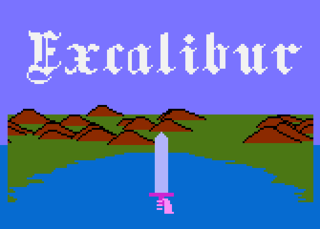
Excalibur is a resource management strategy video game for Atari 8-bit computers published in 1983. It was designed by Chris Crawford and developed with the help of Larry Summers and Valerie Atkinson. Like Crawford's earlier Eastern Front (1941), Excalibur was released through the Atari Program Exchange.
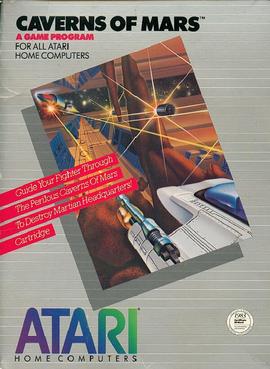
Caverns of Mars is a vertically scrolling shooter for Atari 8-bit computers. It was written by Greg Christensen, with some features later added by Richard Watts, and published by the Atari Program Exchange (APX) in 1981. Caverns of Mars became the best selling APX software of all-time and was moved into Atari, Inc.'s official product line, first on diskette, then on cartridge.
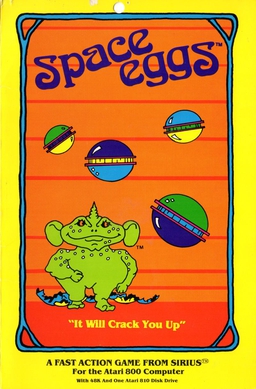
Space Eggs is a fixed shooter video game for the Apple II computer programmed by Nasir Gebelli and published by Sirius Software in 1981. A port to Atari 8-bit computers by Dan Thompson was released the same year. Space Eggs is an unofficial version of the arcade video game Moon Cresta.

Blue Max is a scrolling shooter written by Bob Polin for Atari 8-bit computers and published by Synapse Software in 1983. It was released for the Commodore 64 the same year. U.S. Gold published the Commodore 64 version in the UK in 1984 and ported the game to the ZX Spectrum. In 1987, Atari Corporation published Blue Max as a cartridge styled for the then-new Atari XEGS.

Gateway to Apshai is an action-adventure game for the Commodore 64, ColecoVision and Atari 8-bit computers. It was developed by The Connelley Group and published by Epyx in 1983 as a prequel to Temple of Apshai. It is a more action-oriented version of Temple of Apshai, with smoother and faster graphics, streamlined controls, fewer role-playing video game elements, and fewer room descriptions.
Adventure International was an American video game publishing company that existed from 1979 until 1986. It was started by Scott and Alexis Adams. Their games were notable for being the first implementation of the adventure genre to run on a microcomputer system. The adventure game concept originally came from Colossal Cave Adventure which ran strictly on large mainframe systems at the time.

Bandits is a 1982 fixed shooter written by Tony and Benny Ngo for the Apple II and published by Sirius Software. The game is a clone of Taito's 1980 Stratovox arcade video game where the goal is to prevent aliens from stealing objects. Bandits was ported to the Atari 8-bit computers, Commodore 64, and VIC-20.

Boulders and Bombs is a video game for Atari 8-bit computers published on cartridge by CBS Software in 1983. It was written by Keith Dreyer and Torre Meeder who previously developed the Berzerk-clone K-Razy Shoot-Out. In Boulders and Bombs, the player must dig tunnels so three people can cross from one side of the screen to the other. Bird-like creatures, flying in the upper portion of the screen, launch projectiles into the dirt to thwart the player. While there isn't a separate multiplayer mode, joysticks plugged into each of the remaining 1-3 ports can each control one of the birds. The game generally received poor reviews, with reviewers citing control issues and the lack of excitement.

Track Attack is a train-themed action game written by Chris Jochumson for the Apple II. It was published in 1982 by Broderbund, as was a port for Atari 8-bit computers by Bill Hooper. Track Attack contains both overhead maze levels and side-scrolling platform game levels. In the latter, the player controls a character who runs along the top of a train, performing acrobatic leaps between the cars. Jochumson co-authored The Arcade Machine which was released the same year.

Hockey is a ice hockey video game published by Gamma Software for Atari 8-bit computers in 1981. Gamma released the Atari 8-bit game Soccer the following year.

Probe One: The Transmitter is a graphic adventure game published by Synergistic Software for Atari 8-bit computers in 1982.
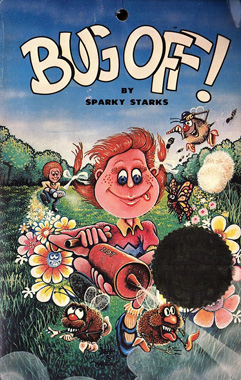
Bug Off! is a single screen fixed shooter for Atari 8-bit computers written by Sparky Starks and published by Adventure International in 1982. QuelleSoft released the game in Germany as Kampf dem Ungeziefer in 1984.
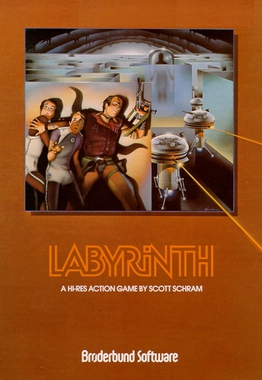
Labyrinth is a maze shooter written by Scott Schram for the Apple II, published in 1982 by Broderbund. It was ported to the Atari 8-bit computers by Corey Kosak.

Pathfinder is a maze shooter written by Randy Jongens for Atari 8-bit computers. It was published in 1982 by Gebelli Software.
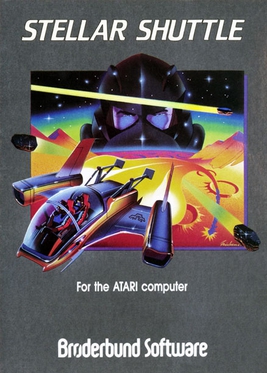
Stellar Shuttle is an action game written by Matt Rutter for Atari 8-bit computers and published in 1982 by Broderbund. The game is similar to the arcade Lunar Rescue released in 1979 by Taito.

Mr. Cool is an action game designed by Peter Oliphant and published in 1983 by Sierra On-Line for the Atari 8-bit and Commodore 64 home computers. The ports for the IBM PC and Apple II were written by John Redekopp and released the same year. The game is heavily inspired by the 1982 arcade video game Q*bert.

O'Riley's Mine is an action game designed by Mark Riley and published in 1983 by Datasoft for Atari 8-bit computers. The game was ported to the Apple II by Larry Lewis and Commodore 64 by Al Rubin. Both ports were also released in 1983.

Nightraiders is a vertically scrolling shooter designed by Peter Filiberti and published in 1983 by Datamost for Atari 8-bit computers. It is heavily inspired by the 1982 Sega arcade video game Zaxxon.

Zeppelin is a multidirectional scrolling shooter designed by Cathryn Mataga and published in 1983 by Synapse Software for Atari 8-bit computers. A Commodore 64 port programmed by David Barbour was released in 1984.


















